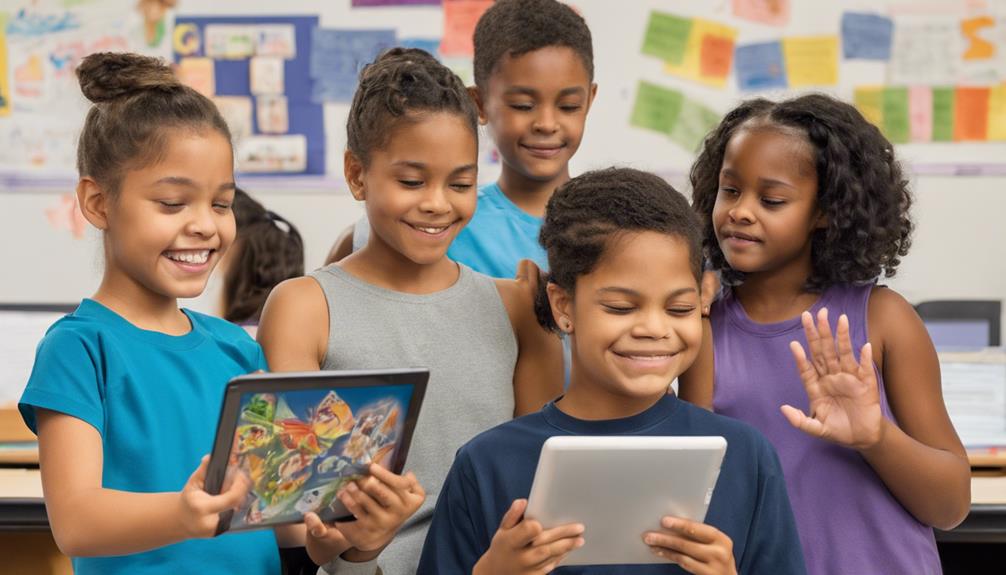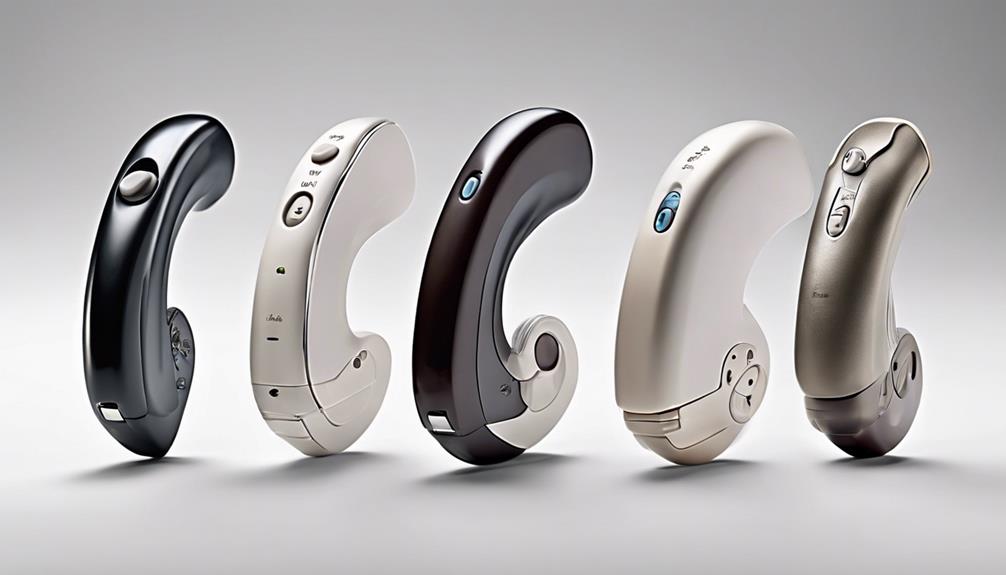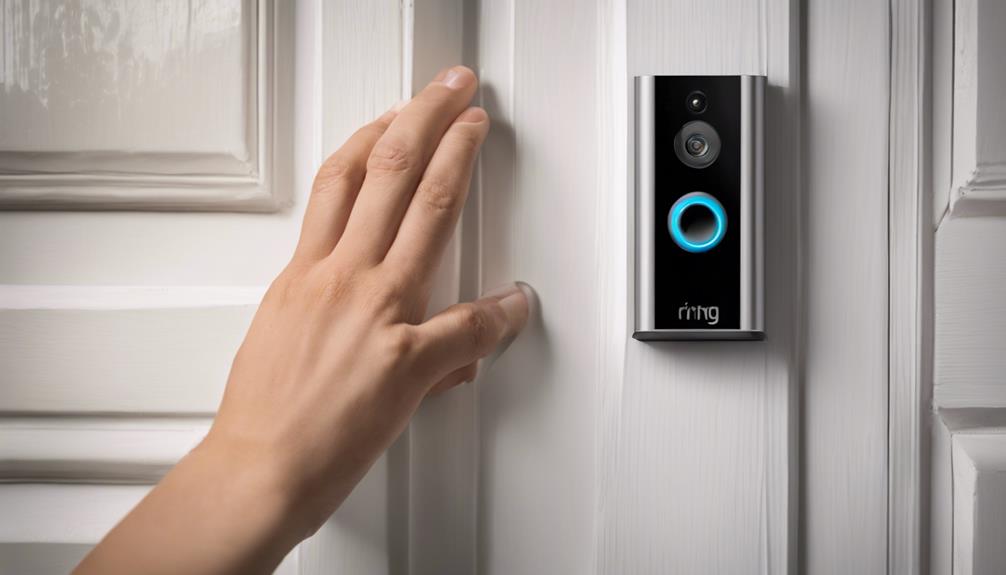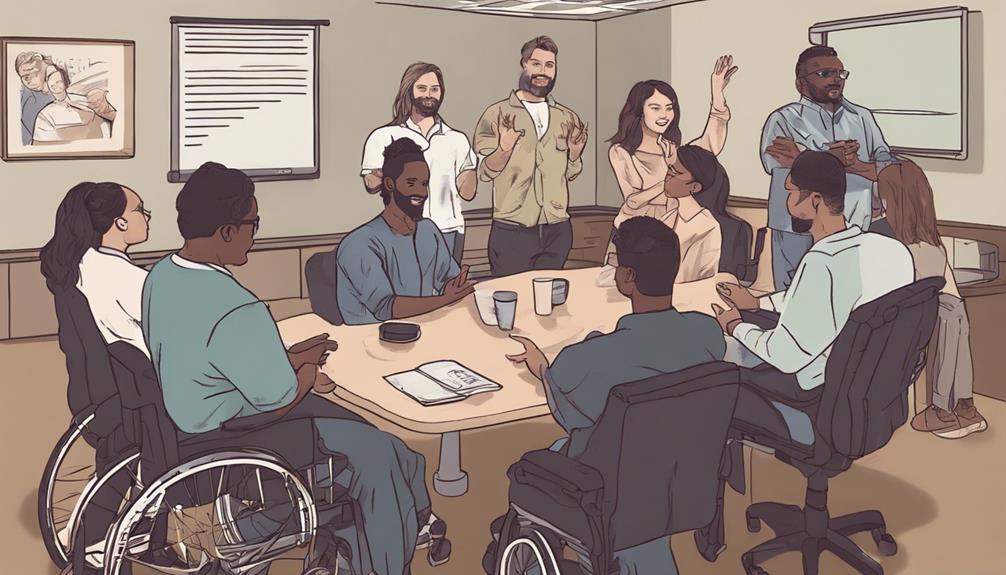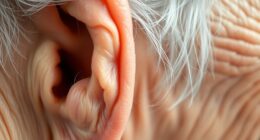Picture uncovering creative techniques that completely change how deaf students understand written language. Through customized methods and specific tools, these programs strive to unleash the potential of deaf learners in developing crucial literacy skills.
From interactive visual aids to cutting-edge technology, the strategies employed in these programs offer a glimpse into the transformative power of education for deaf students.
Explore how these initiatives are reshaping the landscape of literacy instruction for individuals with hearing loss, providing a pathway to academic achievement and personal growth.
Key Takeaways
- Effective integration of sign language boosts vocabulary and comprehension in deaf students.
- Visual aids and technology tools enhance engagement and understanding in reading programs.
- Tailored literacy programs and reading mentors support deaf students in developing strong reading skills.
- Motivating environments with interactive tools like virtual reality improve literacy outcomes for deaf readers.
Sign Language Integration for Reading Enhancement
Enhancing reading skills for deaf students can be achieved through the effective integration of sign language alongside spoken language. Deaf education benefits greatly from incorporating sign language in reading programs. Research has shown that this integration not only improves vocabulary and comprehension but also enhances overall literacy outcomes for deaf students. By using sign language, deaf readers can boost their phonological awareness and decoding skills, essential components for successful reading.
Moreover, combining sign language with reading instruction creates a more engaging and motivating learning environment for deaf students. This approach promotes bilingualism and strengthens language development in deaf individuals. Therefore, incorporating sign language in reading programs is a crucial aspect of deaf education that leads to improved reading skills and better academic outcomes for deaf students.
Visual Aids for Deaf Reading Programs
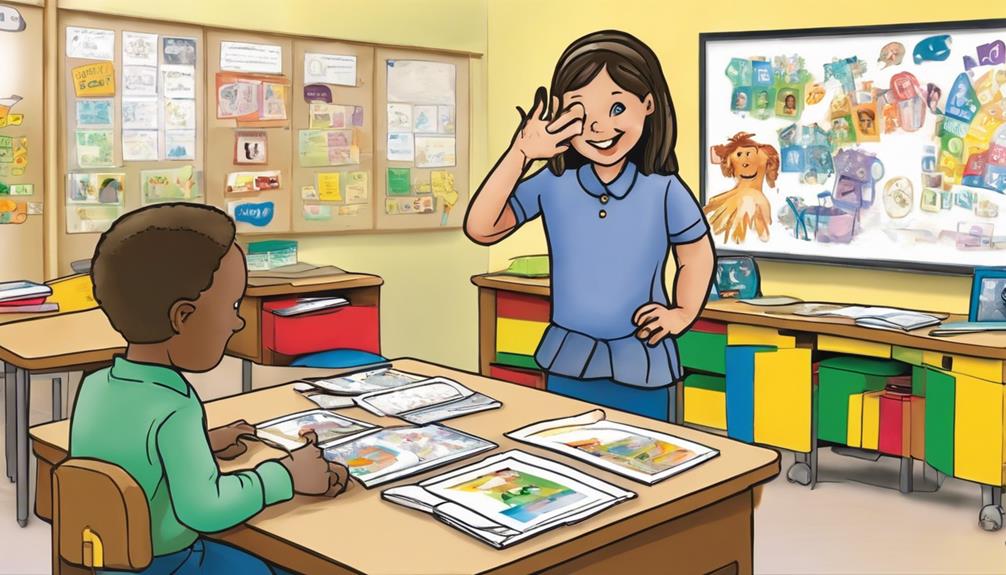
Utilizing visual aids in deaf reading programs can significantly enhance comprehension and engagement for students with hearing impairments. Here are four ways visual aids can benefit deaf students in their reading programs:
- Enhanced Comprehension: Visual aids, such as pictures and diagrams, provide additional context and support understanding of the text for deaf students.
- Connection with Language: Incorporating sign language videos alongside reading materials helps deaf students connect visual cues with language, reinforcing their understanding.
- Auditory Reinforcement: Text-to-speech software can offer auditory reinforcement for written text, aiding deaf students in associating sounds with words and improving their reading skills.
- Engagement through Interactivity: Interactive whiteboards with visual displays make reading activities more engaging for deaf students, allowing for interactive learning experiences and increased participation.
Technology Tools in Deaf Literacy Programs

Integrating technology tools into deaf literacy programs enhances reading skills and engagement for students with hearing impairments. Classroom teachers play a crucial role in implementing these tools effectively.
Captioned videos and interactive apps provide visual and interactive support, aiding in comprehension. Accessible e-books with sign language videos and audio narration offer multiple modalities for engagement in literacy activities.
Speech-to-text software and screen readers help improve reading fluency and comprehension by enabling access to written materials. Online platforms with built-in dictionaries support vocabulary expansion, enhancing independent reading.
Virtual reality simulations and gamified learning apps create immersive literacy experiences, fostering motivation and engagement. By incorporating these technology tools, classroom teachers can create dynamic and inclusive learning environments that cater to the diverse needs of deaf students, ultimately enhancing their reading skills and overall literacy development.
Bilingual Approaches for Deaf Readers

To further empower deaf students in their literacy journey, consider exploring bilingual approaches that seamlessly blend sign language and written language to enhance reading skills. Bilingual approaches for deaf readers have shown significant benefits in improving literacy outcomes. Here are some key points to understand how these approaches can support deaf readers:
- Improved Literacy Outcomes: Research indicates that bilingual education can enhance literacy skills among deaf students by combining sign language and written language effectively.
- Simultaneous Language Development: Bilingual programs aim to develop language and literacy skills concurrently in deaf learners, promoting a holistic approach to reading instruction.
- Enhanced Comprehension and Fluency: Implementing bilingual approaches in reading instruction can lead to better comprehension and fluency in deaf readers, bridging the gap between sign language and written language.
- Sign Language as a Bridge: Sign language serves as a bridge to written language, facilitating deaf students' access to literacy by providing a familiar foundation for learning.
Support Systems for Deaf Student Readers

Specialized support systems play a vital role in enhancing the reading skills of deaf student readers. These systems encompass tailored literacy programs that address the unique challenges faced by deaf students. Language development strategies are often integrated into these programs to improve reading proficiency among deaf individuals. Reading mentors and tutors provide crucial one-on-one support and guidance, fostering personalized learning experiences.
Additionally, the utilization of technology tools like text-to-speech software and captioned videos enhances accessibility and engagement for deaf student readers.
Collaboration among educators, speech-language pathologists, and parents is key to establishing a robust support network for deaf student readers. By working together, these stakeholders can create a cohesive environment that nurtures language development and fosters a love for reading. Through these collective efforts, deaf students can receive the individualized support necessary to overcome barriers and excel in their reading journey.
Frequently Asked Questions
What Is the Best Reading Program for Deaf Children?
For deaf children, the best reading program focuses on phonics, visual aids, and individualized instruction. Incorporating sign language and multisensory techniques can bridge language gaps. Programs like Orton-Gillingham are effective in improving reading skills.
How Can I Help My Deaf Child Learn to Read?
You can help your deaf child learn to read by incorporating visual aids, sign language, phonics, and diverse reading materials. Encourage reading aloud, engaging in discussions, and seeking support from educators and specialists for tailored interventions.
What Is the Literacy Curriculum for Deaf Students?
To understand the literacy curriculum for deaf students, focus on language and literacy skills crucial for academic success. Strategies enhance reading, writing, and communication abilities. Aim to improve speech perception, auditory processing, and vocabulary development, supporting integration in educational settings.
What Is the Shared Reading Program for Deaf People?
Engage in shared reading sessions to enhance your literacy skills. Take turns reading aloud in a group, boosting language development and comprehension. Experience various genres and styles of literature, fostering a love for reading.
Are There Reading Programs for Deaf Students Available at Deaf-Friendly Vacation Destinations?
Yes, there are reading programs for deaf students available at top Deaffriendly vacation destinations. These programs aim to provide an inclusive and accessible learning environment for deaf students while they enjoy their vacation. The reading programs may include sign language interpretation and visual aids to support the students’ learning experience.
Conclusion
You've navigated the terrain of enhancing reading skills for deaf students with finesse, like a skilled captain guiding a ship through stormy seas.
By incorporating Sign Language, visual aids, technology tools, bilingual approaches, and support systems, you've set sail towards a brighter future for these students.
Keep harnessing the power of language and literacy programs tailored to their needs, paving the way for their academic success and personal growth.
Fair winds and following seas on your journey to empower deaf readers!

